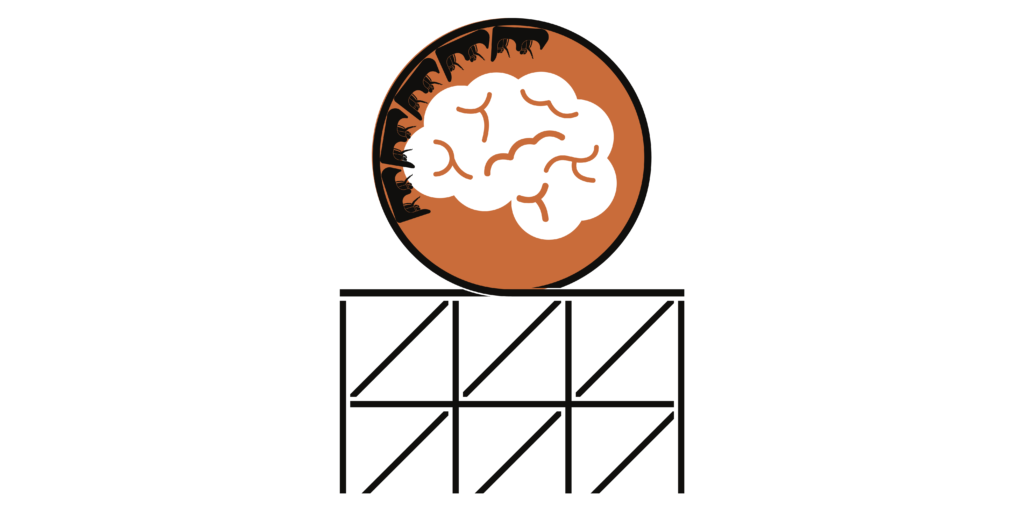There is a huge philosophical question about the mind and the body. Some philosophers say that they are separate entities while others postulate that they are one and the same. In psychology, we see the body as the unconscious mind. From this well-researched, non-dualist perspective, it is undeniable that our body states impact the state of our mental health. Our nervous system plays a big role in our unconscious processes. At Adaptive Edge Coaching, we utilize polyvagal theory to help you understand that physical and emotional changes occur when you are in a mental transition.
What is Polyvagal theory?
The vagus nerve is the main nerve of the parasympathetic nervous system. It controls things like mood, digestion, heart rate, and other bodily responses. Think of polyvagal theory like a roller coaster. In the line, waiting to get on the roller coaster, is where we feel the safeset. We are enjoying the wait with our friends. The ventral vagal complex helps us with communication and connection with others. As humans are innately social creatures, feeling connected and engaging with others helps us feel more secure. We are living our best lives waiting in line with others for the ride to begin. This is the ventral vagal state.
Once we get on the ride and are inching our way slowly to the top of the coaster, our sympathetic nervous system jumps in. This is when our famous fight or flight senses get activated. This is called the mobilization phase. We prepare to protect ourselves from any danger coming our way. Some of us get little anxious butterflies in our stomach as we prepare and hurtle our way down the track. Here, some are mobilizing our bodies for action in case something bad happens. Others of us begin to shut down and that leads us to our next phase.
Uh oh. We are now speeding along a thin metal track in a tiny metal container with just a thin bar over our laps. We are immobilized. There is no way we can escape the roller coaster until the ride is over. This is where we freeze. If we cannot fight or flee, we freeze in order to try to preserve life. This is our dorsal vagal complex.
The roller coaster journey can be triggered by the smallest amount of internal or external stimuli which sends feedback to the brain. It happens without you even knowing it! Let’s take a deeper look into each of the different phases.
3 Functions of the Vagus Nerve
Social Engagement
The ventral vagal complex is the primary controller of our sense of connection and engagement with others. Located in the face, throat, and chest, our ventral vagus is our social engagement system. We feel safe, social, and free to engage with whomever with want. We feel comfortable to express ourselves and are able to make strong emotional connections. Our sense of empathy for others is heightened.
How this looks: We are happy! Life feels good. We walk outside, smell the flowers, and everything looks a little brighter. We live in the present, stay mindful of our actions, and keep compassion for others. We hang out with friends, go shopping, and tip our waiters a lil’ extra.
Mobilization
The activation of the sympathetic nervous system signals to our brain that something in our surroundings is a stressor. This is our fight or flight response. We start to prepare for the worst. We may get agitated, restless, and frantic. The signals get sent through the spinal cord to the peripheral nerves to tell the body to mobilize for a potentially sticky situation. In this phase, our body gets physically prepared to deal with a stressor by increasing our heart rate, tensing our muscles, and making our breath more shallow.
How this looks: You feel yourself becoming panicked, anxious, and fearful or maybe irritated, angry, and frustrated. You start to get overwhelmed by life and let those negative feelings overtake you. You might honk aggressively at someone while stuck in traffic, cancel plans with friends, or kick around some furniture.
Immobilization
The dorsal vagal complex is all about freezing the body with immobilization. If mobilization was the first line of defense then immobilization is our second. This is our back up plan in case things go south and we can’t fight or flee. We start to shut down. We may begin to block out the rest of the world to numb ourselves. This is located in the diaphragm, gut, and viscera.
How this looks: You feel trapped, helpless, hopeless, and numb. You shut down. You feel like you fell to the bottom of a dark hole and there is no chance ever getting out. We may act like an audience member to our own life.
If you liked what you read here, consider checking out our other blog posts! Email Greg Murray at greg@adaptiveedgecoaching.com for a consultation to learn more about how this theory could be applied to YOU.

